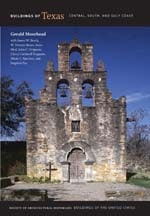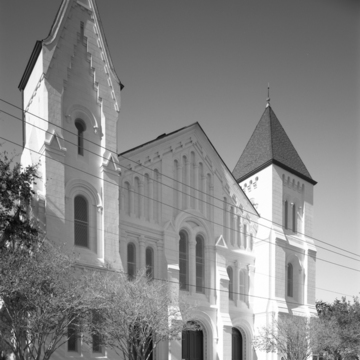The First Presbyterian Church is one of the outstanding nineteenth-century buildings of Texas. It suggests the influence of mid-nineteenth-century French architect and theorist Eugène-Emmanuel Viollet-le-Duc, not only because it is based on French Romanesque architectural models but because of the sculptural intensity of its white, stucco-surfaced brick walls. The powerful composition of the 19th Street front, which rises from weighty pier buttresses framing the triple-arched doorways to an ethereal screen of blind arches beneath the gabled roof, relies on massing rather than architectural ornament. This church is the building that brought Clayton to Galveston in 1872. Clayton had moved from Cincinnati, his American hometown, to Houston, where he had relatives, in 1871. From Houston he came to Galveston to administer construction of the church for Memphis, Tennessee, architects Jones and Baldwin.
You are here
First Presbyterian Church
If SAH Archipedia has been useful to you, please consider supporting it.
SAH Archipedia tells the story of the United States through its buildings, landscapes, and cities. This freely available resource empowers the public with authoritative knowledge that deepens their understanding and appreciation of the built environment. But the Society of Architectural Historians, which created SAH Archipedia with University of Virginia Press, needs your support to maintain the high-caliber research, writing, photography, cartography, editing, design, and programming that make SAH Archipedia a trusted online resource available to all who value the history of place, heritage tourism, and learning.


